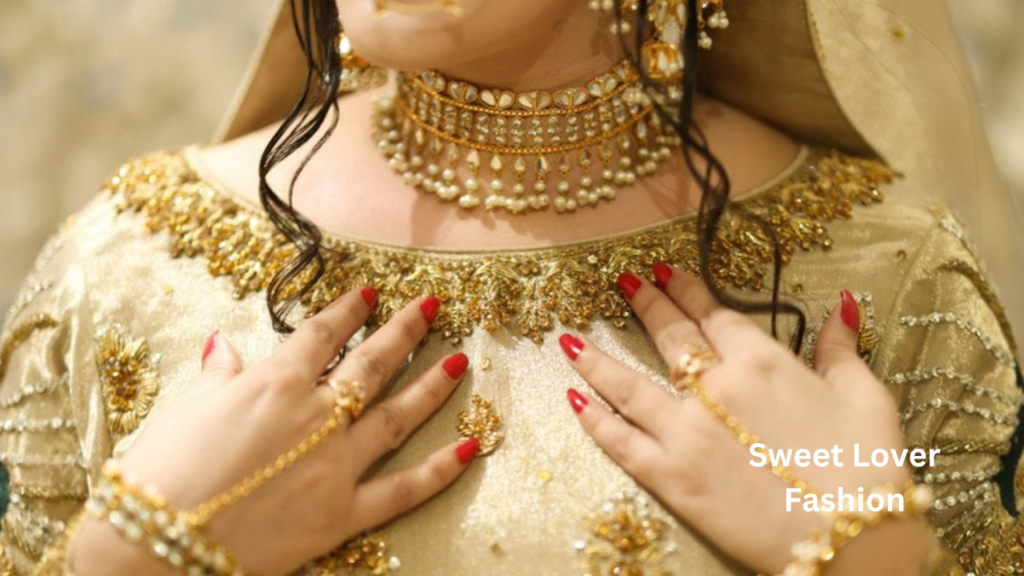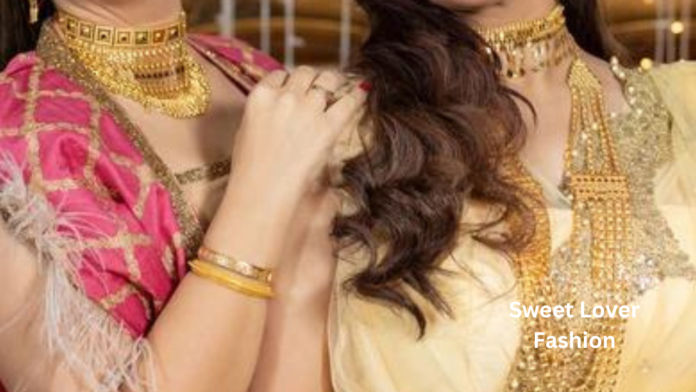Jewelry is more than just an accessory; it’s wearable art, reflecting the creativity, skill, and vision of its creator. The journey from an initial concept to a sparkling, finished piece is a fascinating process that many admire but few truly understand. For jewelry designers, each piece tells a story, representing countless hours of inspiration, design, and craftsmanship. In this article, we’ll take you behind the scenes to explore how top jewelry designers bring their extraordinary creations to life, from sketch to shine.
The Creative Process of Jewelry Designers
How Jewelry Designers Find Inspiration
For most jewelry designers, inspiration is the first step in the creative process. Designers draw inspiration from a variety of sources—nature, architecture, art, personal experiences, and even emotions. These diverse elements come together to spark the initial idea for a new piece of jewelry. For example, a designer might be inspired by the fluid lines of a river or the structure of a historic building. These influences shape the direction of the design, giving each piece a unique identity.
Translating Vision into Sketches
Once inspiration strikes, the next step is translating the vision into a tangible sketch. Jewelry designers often begin with hand-drawn sketches, carefully planning out the details and proportions of their design. Some designers also use digital tools to enhance their sketches, offering a more precise representation of what the finished product will look like. Whether hand-drawn or digital, the sketch is the foundation of the jewelry-making process, allowing the designer to refine their vision and ensure the balance of elements is just right.
Materials and Gemstones: Choosing the Right Elements
Selecting Precious Metals: Gold, Platinum, Silver
The choice of materials plays a critical role in the creation of any jewelry piece. Jewelry designers select metals such as gold, platinum, and silver based on the aesthetic, durability, and intended use of the piece. Gold, with its timeless appeal, is favored for its warmth and versatility, while platinum’s strength and shine make it ideal for high-end pieces. Silver, though less expensive, offers a sleek and modern look.
Understanding Gemstone Selection and Sourcing
Gemstones are another key component in the design process, bringing color, meaning, and personality to each piece. Jewelry designers must carefully select the right stones, considering factors such as color, cut, and clarity. But sourcing gemstones is not just about aesthetics. Many designers today prioritize ethical sourcing, ensuring that their materials come from mines that practice fair labor and sustainable mining.
Ethical and Sustainable Sourcing Practices
With consumers becoming more conscious of where their jewelry comes from, jewelry designers are increasingly focused on sustainable and ethical sourcing. This means selecting gemstones and metals that are mined responsibly, with minimal environmental impact and fair treatment of workers. For many designers, this commitment to sustainability is not just a trend but a core part of their design philosophy.
Crafting the Design: From Prototype to Final Piece
The Role of Master Craftsmen and Artisans
While the initial vision comes from the designer, the actual creation of the jewelry often requires the expertise of skilled artisans. These master craftsmen bring the designer’s sketches to life, using traditional techniques to shape, mold, and refine the materials. From casting the metal to setting the gemstones, these artisans play a crucial role in transforming a sketch into a finished, wearable piece of art.
3D Modeling and Prototyping in Modern Jewelry Making
Many jewelry designers today use 3D modeling and prototyping as part of the creation process. This allows them to visualize the piece in three dimensions and make any necessary adjustments before the final production. Prototyping ensures that the design works not only aesthetically but also structurally, guaranteeing that the finished piece will be both beautiful and durable.
Casting, Setting, and Polishing: The Technical Skills Involved
Once the prototype is perfected, the jewelry enters the production phase. This involves casting the metal into its final shape, carefully setting the gemstones, and polishing the piece to perfection. Each step requires precision and expertise, with the final polish bringing out the true shine of the piece.
Signature Styles and Techniques of Top Jewelry Designers
Unique Techniques Used by Top Designers
Each designer has their own unique approach and techniques that set them apart in the world of jewelry design. For example, some may specialize in intricate hand-engraving, while others may focus on bold, geometric shapes. These signature techniques become a defining part of their brand, making their pieces instantly recognizable.
Combining Traditional Methods with Modern Technology
Many top jewelry designers combine time-honored craftsmanship with cutting-edge technology. Traditional methods, like hand-setting stones or using lost-wax casting, are paired with modern tools such as laser cutting and 3D printing. This fusion of old and new allows designers to push the boundaries of what’s possible, creating innovative pieces that maintain the artistry of the past.
The Development of Jewelry Design Throughout Time
Historical Influences on Modern Jewelry Design
Jewelry design has a long and rich history, and many contemporary designers draw on these historical influences. From the ornate styles of the Victorian era to the clean lines of Art Deco, today’s jewelry designers often reference the past while adding a modern twist. This blending of history and innovation is what keeps jewelry design fresh and exciting.
How Top Jewelry Designers Innovate While Respecting Tradition
While innovation is key to staying relevant, top jewelry designers also respect the traditions of their craft. Many designers strive to strike a balance between creating forward-thinking designs and preserving the techniques that have been passed down through generations. This respect for tradition, combined with a willingness to experiment, is what keeps their work timeless.
Collaborations and Celebrity Connections
How Celebrity Endorsements Elevate Jewelry Brands
In the world of luxury jewelry, celebrity endorsements can have a huge impact. When a celebrity wears a designer’s piece on the red carpet, it can catapult that brand to new levels of recognition. Many top jewelry designers have collaborated with A-list celebrities, further cementing their status as leaders in the industry.

Famous Collaborations Between Jewelry Designers and Fashion Houses
Collaborations between jewelry designers and fashion houses have produced some of the most iconic collections in recent years. These partnerships blend the unique vision of the designer with the broader appeal of a fashion brand, resulting in pieces that are both stylish and highly coveted.
The Business Side: Building a Successful Jewelry Brand
Balancing Creativity with Commercial Appeal
For jewelry designers, creating a successful brand requires a balance between artistic vision and commercial viability. While creativity is essential, designers must also consider what will appeal to consumers. The most successful designers find a way to stay true to their aesthetic while producing pieces that resonate with a wide audience.
Marketing, Branding, and Reaching Luxury Consumers
Marketing and branding are crucial for any luxury brand. Jewelry designers must craft a strong brand identity that reflects the quality and exclusivity of their pieces. Reaching luxury consumers requires a mix of traditional marketing and social media engagement, allowing designers to build a loyal following.
The Importance of Social Media and Online Presence
In today’s digital world, social media plays a critical role in building a jewelry brand. Platforms like Instagram allow jewelry designers to showcase their work, connect with potential customers, and grow their brand presence. A well-curated online presence can be just as important as a storefront in reaching new audiences.
Trends Shaping the Future of Jewelry Design
Minimalism, Sustainability, and Customization
Several key trends are shaping the future of jewelry design. Minimalism, with its focus on clean lines and simplicity, continues to dominate the market. Sustainability is also becoming a priority, with more designers focusing on ethical sourcing and eco-friendly materials. Customization is another growing trend, as consumers seek out pieces that are uniquely their own.
The Rise of Lab-Grown Diamonds and Eco-Friendly Materials
The use of lab-grown diamonds as a more cost-effective and environmentally friendly substitute for diamonds extracted from mines is growing. Many jewelry designers are embracing this trend, using lab-grown stones to create stunning pieces that are both environmentally friendly and budget-conscious.
How Consumer Preferences Are Influencing Jewelry Designers
Consumer demand for ethical, personalized, and high-quality pieces is driving innovation in the jewelry world. Jewelry designers are listening to these preferences and creating collections that reflect the values of today’s buyers. As a result, the industry is becoming more diverse, inclusive, and forward-thinking.
How to Spot High-Quality Jewelry Design
What to Look for in Craftsmanship and Materials
When purchasing fine jewelry, it’s important to know how to spot quality. Jewelry designers who are skilled in their craft use high-quality materials and pay close attention to detail. Look for smooth finishes, precise stone settings, and sturdy clasps—these are signs of excellent craftsmanship.
Identifying a Designer’s Signature Touch
Many top jewelry designers have a signature style or technique that makes their work easily identifiable. Whether it’s the use of specific gemstones, a unique setting technique, or a distinctive design aesthetic, these signature touches are what make their pieces stand out.
Why Investing in Designer Jewelry Is a Timeless Choice
Designer jewelry often holds its value and can become a cherished heirloom. Investing in pieces from renowned jewelry designers not only offers the joy of wearing something beautiful but also provides lasting value. These timeless pieces can be passed down through generations, carrying both sentimental and monetary worth.
Behind the Scenes with Top Jewelry Designers
A Day in the Life of a Renowned Jewelry Designer
The life of a top jewelry designer is both creatively rewarding and demanding. This section takes a look behind the scenes at a typical day, from sketching new designs to overseeing production and managing client relationships.
Challenges and Rewards in the World of Luxury Jewelry Making
Creating luxury jewelry comes with its challenges, from sourcing rare materials to meeting high client expectations. But for jewelry designers, the rewards—seeing their creations come to life and knowing they are worn and cherished—make the effort worthwhile.
FAQs
Who is the most famous jewelry designer?
What is a jewelry designer called?
Is jewelry design a good career?
What does a jewelry designer do?
How to learn jewelry design?
Read more: Pakistani Bridal Dresses in Pakistan
Conclusion
The world of jewelry designers is one of creativity, skill, and dedication. From sketching an idea on paper to transforming raw materials into shining masterpieces, designers bring their unique vision to life with each piece. Understanding the process behind the creation of fine jewelry allows us to appreciate not only the beauty of the finished product but also the artistry and craftsmanship that goes into it.


